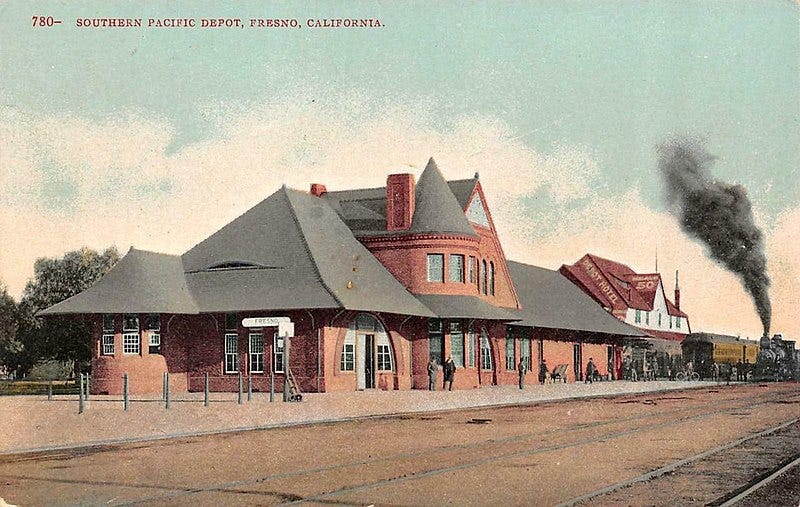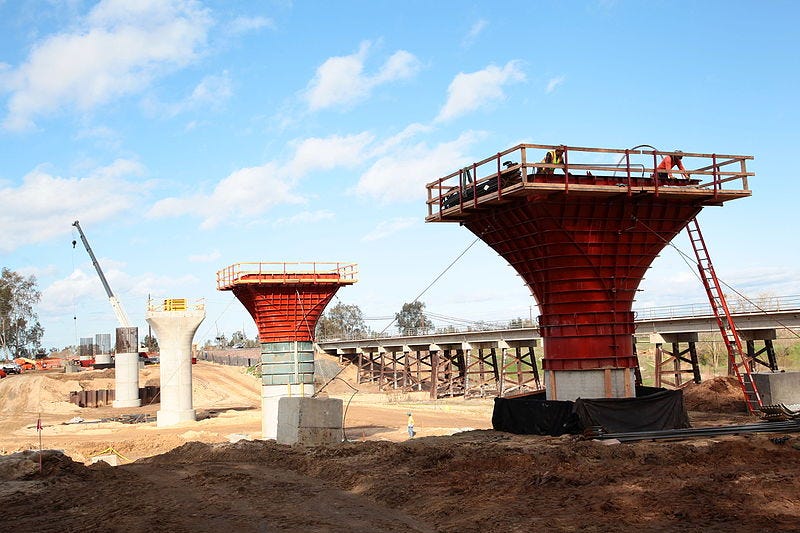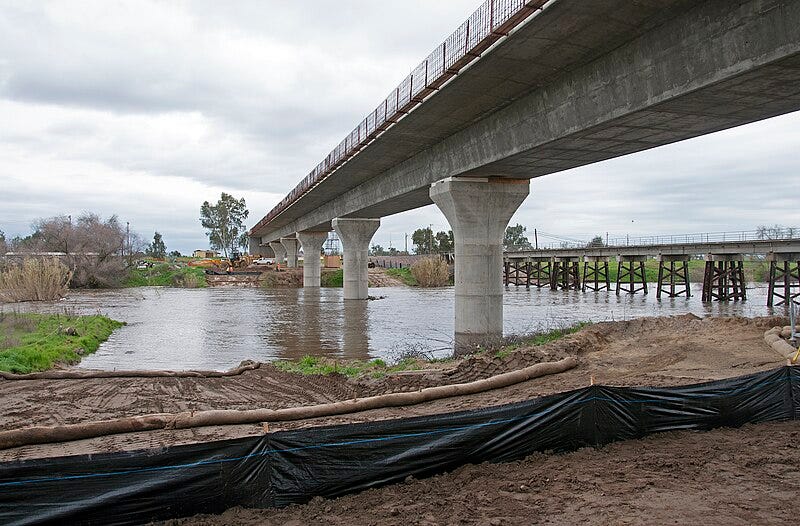
On Jan. 6, 2015 on a nondescript parcel of land in downtown Fresno located in the center of California’s roughly 24,000-square-mile San Joaquin Valley, and adjacent to the Union Pacific tracks — these also being adjacent to a former yet historic Southern Pacific train station (situated to the tracks’ immediate east), ground was formally broken on the Golden State’s statewide then-newest — and America’s first — high-speed-rail project.
In a Jan. 7, 2015 Air Quality Matters blogpost*, I submitted: “…the ceremonial and symbolic groundbreaking marked the official beginning of construction of the state’s 800-mile total high-speed train network connecting Anaheim, Los Angeles, Sacramento, San Diego and San Francisco through California’s heartland – the San Joaquin Valley.”
Much in the way of construction work has been accomplished since that groundbreaking. The concentration of most of that activity has been in the Valley, specifically on a 119-mile-long portion connecting Shafter in the south to Madera in the north on what is known as the Initial Operating Segment (IOS), with an anticipated completion date of 2030.
From a California High-Speed Rail Authority press release dated Jan. 6, 2015:
‘Marking significant progress toward modernizing California’s transportation infrastructure, the California High-Speed Rail Authority today joined hundreds of supporters and government, student, community, transportation, business and labor leaders to break ground on the nation’s first high-speed rail system.’*
Meanwhile, in a Nov. 19, 2014 U.S. Environmental Protection Agency (EPA) news release (and also cited in the same Air Quality Matters post*), then Rail Authority CEO Jeff Morales had this to say:
‘The Authority is building high-speed rail using modern construction equipment that helps protect air quality and reduce greenhouse gas pollution. Through this commitment to sustainable construction, we are building California’s high-speed rail system in an environmentally responsible manner.’
The EPA adding:
The EPA has adopted a comprehensive national program to reduce emissions from non-road diesel engines by integrating engine and fuel controls. Tier 4 refers to the most stringent EPA engine standards for non-road heavy-duty diesel engines. A Tier 4 designation is achieved via different methods such as clean and efficient exhaust systems, electronically controlled engines, and selective catalytic reductions to significantly reduce the levels of harmful pollutants such as particulate matter (PM) and nitrogen oxide (NOx). By 2030, the annual benefits throughout the U.S. from using Tier 4 engines are estimated to reduce NOx, PM2.5, and sulfur dioxide (SO2) by 82 percent, 90 percent, and 99.7 percent, respectively.*

America’s — and California’s — first true high-speed-rail project today marks 10 years since its historic groundbreaking. Meanwhile, construction presses steadily on, on the 171-mile-long Interim IOS connecting Bakersfield in the south with Merced in the north, each and all a part of the total 800-mile-long bullet-train system that is California High-speed Rail.

* Alan Kandel, “California high-speed rail: groundbreaking and boon for the environment,” Air Quality Matters blog, Jan. 7, 2015 https://alankandel.scienceblog.com/2015/01/07/california-high-speed-rail-groundbreaking-and-boon-for-the-environment/
Updated: Jan. 6, 2025 at 7:23 a.m. PST.
Image credits: Edward H. Mitchell (first); California High-Speed Rail Authority (second, last); all via Wikimedia Commons
All material copyrighted 2025, Alan Kandel. All Rights Reserved.



